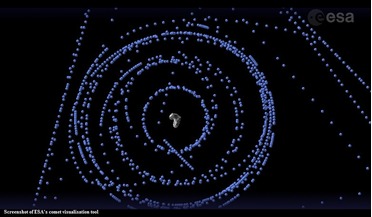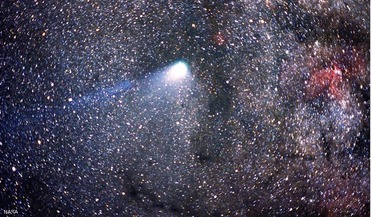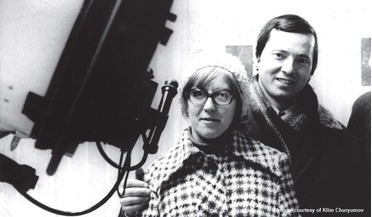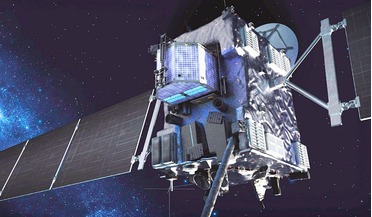 18 August 2015
ESA, comet visualisation, and open data
18 August 2015
ESA, comet visualisation, and open data
How did ESA build its amazing new visualisation tool for comet 67/P Churyumov-Gerasimenko? Well, as the terrific Emily Lakdawalla explains in a recent blog post, it began with a 3D model created by ...
 June 2015
The day Philae landed: how a rough touchdown still made history at the Rosetta Mission
June 2015
The day Philae landed: how a rough touchdown still made history at the Rosetta Mission
... by Philae of Rosetta seconds after separation. Left: Philae imaged by Rosetta’s OSIRIS camera during the descent to the comet surface. This confirmed that the landing gear had unfolded. Whilst attached to Rosetta, Philae continuously communicated...
 March 2015
Chasing comets together: the Vega project in the USSR and beyond
March 2015
Chasing comets together: the Vega project in the USSR and beyond
...the probe’s approach to Venus was close to the date Halley’s comet was supposed to pass by Venus. It was possible to correct... passing by Venus, its trajectory would intersect with the comet. Perhaps it was these factors, along with some academician...
 15 November 2014
Pioneering Philae completes main mission before hibernation
15 November 2014
Pioneering Philae completes main mission before hibernation
... planned for the final block of experiments on the surface. First comet panoramic In addition, the lander’s body was lifted by about 4... While descent images show that the surface of the comet is covered by dust and debris ranging from millimetre ...
 December 2014
Before Rosetta: Svetlana Gerasimenko’s story
December 2014
Before Rosetta: Svetlana Gerasimenko’s story
... it would become a ‘superstar’ and draw such global attention. I am in awe of the clockwork precision of Philae’s landing on the comet – the computations which made it possible are mind boggling and the information gathered by its on-board equipment...
 March 2016
Captivating hearts and minds
March 2016
Captivating hearts and minds
... we found with Rosetta. [6] OSIRIS narrow-angle camera image taken on 23 January 2016 when Rosetta was 75.1 km from Comet 67P/Churyumov- Gerasimenko (the scale is 1.37 m/pixel) An unexplored avenue for creating additional engagement may involve find...